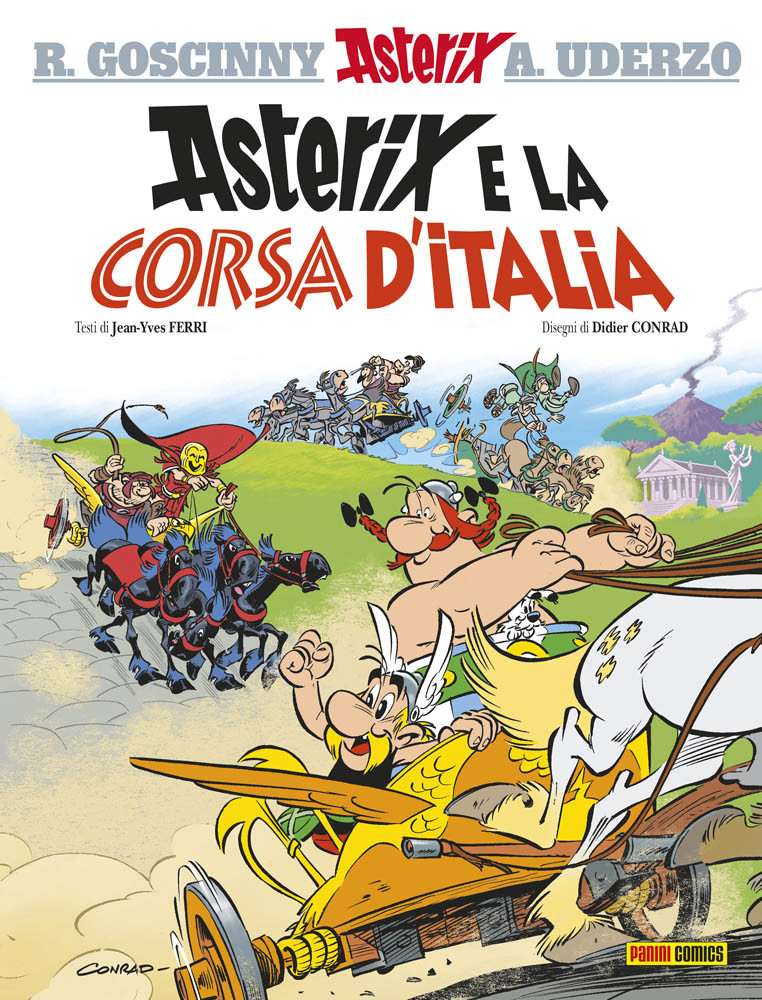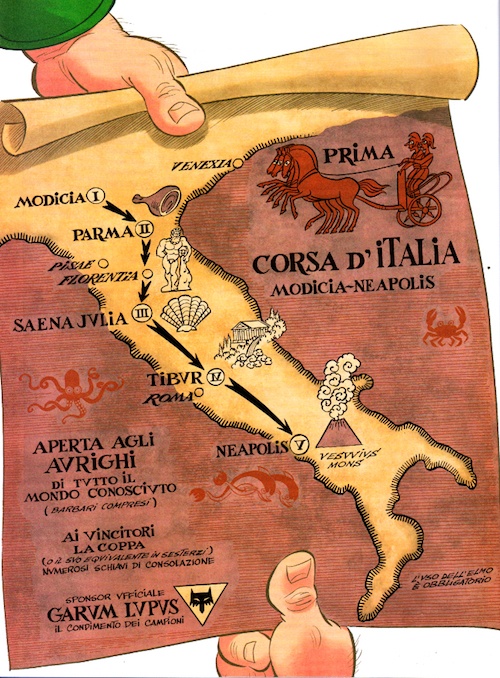Did the Frenchman Astérix know that there has been a CORONAVIRUS in Italy since 2017? Many have even wondered about it, thinking that Asterix’s book was faked on the net. The comic book “Asterix e la corsa d’Italia” is real and came out in 2017 and tells a story by author Jean-Yves Ferri with drawings by French cartoonist Didier Conrad.
Many people are now wondering why the character “Coronavirus” was created, which, according to tradition, is one of the many funny names present in Asterix comics and which are invented in a comic key.
 Coronavirus is a masked athlete, he is the usual Roman hero unbeatable by all but the Gauls. The comic strip’s take on the Roman Empire always follows the same pattern and although we won’t reveal who’s behind the mask, as always this story ends with the fearsome Coronavirus defeated and humiliated by our heroes.
Coronavirus is a masked athlete, he is the usual Roman hero unbeatable by all but the Gauls. The comic strip’s take on the Roman Empire always follows the same pattern and although we won’t reveal who’s behind the mask, as always this story ends with the fearsome Coronavirus defeated and humiliated by our heroes.
Is the name Coronavirus therefore entirely causal and chosen specifically to mock the Romans? In Asterix, people’s names are always ironic, their “sound” is used to take by the back door and therefore his wife is called Mozzarella while the sponsor Garum Lupus.
Some people wonder how we can be ironic about this problem, but in defence of the authors we have to think that in 2017 this term was little used and 15 years had passed since the outbreak of Sars coronavirus in China. So we are predisposed to believe that when the comic came out the threat of a pandemic seemed far away.
If a danger is far enough away, it is quite peaceful to make irony and joke about it, especially since Coronavirus is the name of a family of viruses that virologists all over the world have known for a long time.

| Asterix e la Corsa d’Italia by Jean-Yves Ferri and Didier Conrad translation by Vania Vitali and Andrea Toscani distributed in Italy by Panini Comics, 2017 Original title: Astérix et la Transitalique Binding: Cardboard ISBN: 9788891230201 48 pagine, 12,90 € |
Asterix e la corsa d’Italia (“Asterix and the Chariot Race”): In 50 B.C. Italy is completely under the dominion of Rome. Caesar hoped for a unified Italy, but the peninsula was made up of many regions, each claiming its own independence… On 26th October Asterix landed in Italy and began a daring race throughout the country!

“All roads lead to Rome”, in Latin “Omnes viae Romam ducunt”, is the typical saying of Italian culture and it is known by all because almost all the main consular roads left from the capital. Just think of the Via Aurelia, the Appia, Via Cassia, the Salaria, the Flaminia, Tiburtina, Casilina, Ostiense.
The proverb is inherent in Italian culture also because the efficient system of roads has always been a source of pride for ancient Rome. For this reason “Asterix and the race of Italy” begins with this sentence:
“Ah Italy… A land of wonders and a shining civilization. To tell it as the best symbol of its streets, safe and straight, that from every corner of the known world lead to Rome?”
But the French are not generous in paying homage to our country, so this incipit immediately hides the subtle ant’italic satire that characterises Asterix’s comic strip. It’s not by chance that the story, from the very first one, is ironic about the state of maintenance of the roads and the adventure opens with an accident in which a chariot puts a wheel on a wheel and goes off the road, and the comment from a passerby “Aridaje! They run, they run… don’t they know that in Rome there are potholes?” . He is accused of financing his orgies with the money allocated for the care and maintenance of the roads, and so he organises the competition to demonstrate the excellence of the Roman road system.
It is no coincidence that the character Lactus Bifidus in his opening speech says: “I take advantage, hic et nunc ( here and now ), of the word granted to me to announce an unprecedented chariot race! The race will cross the entire peninsula and will be open to all the peoples of the known world! Thus demonstrating, urbi et orbi ( in Rome and the world ), the excellence of the Roman roads”.

Igor W. Schiaroli is specialized in new media and technology. He has expertise in publishing and media sector. He is an independent journalist and a writer but primary a technologist and an economist too. He has passion and curiousity about science and travel.
He had major roles for Italian and International Media and Telecommunications companies.


